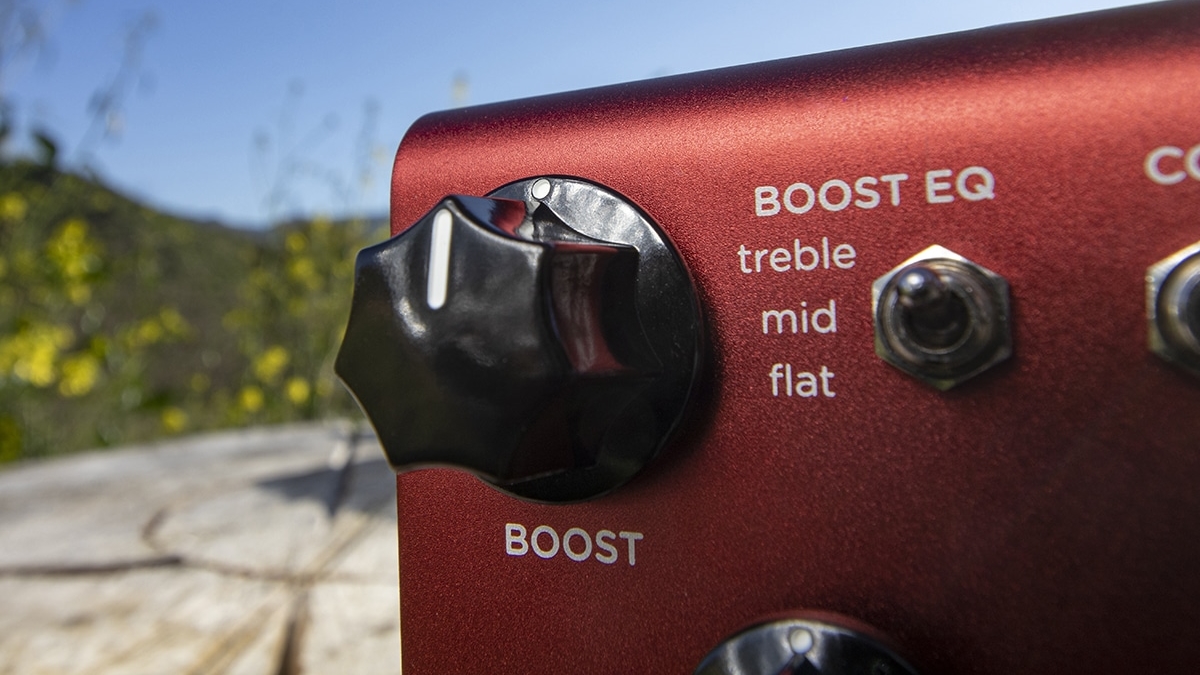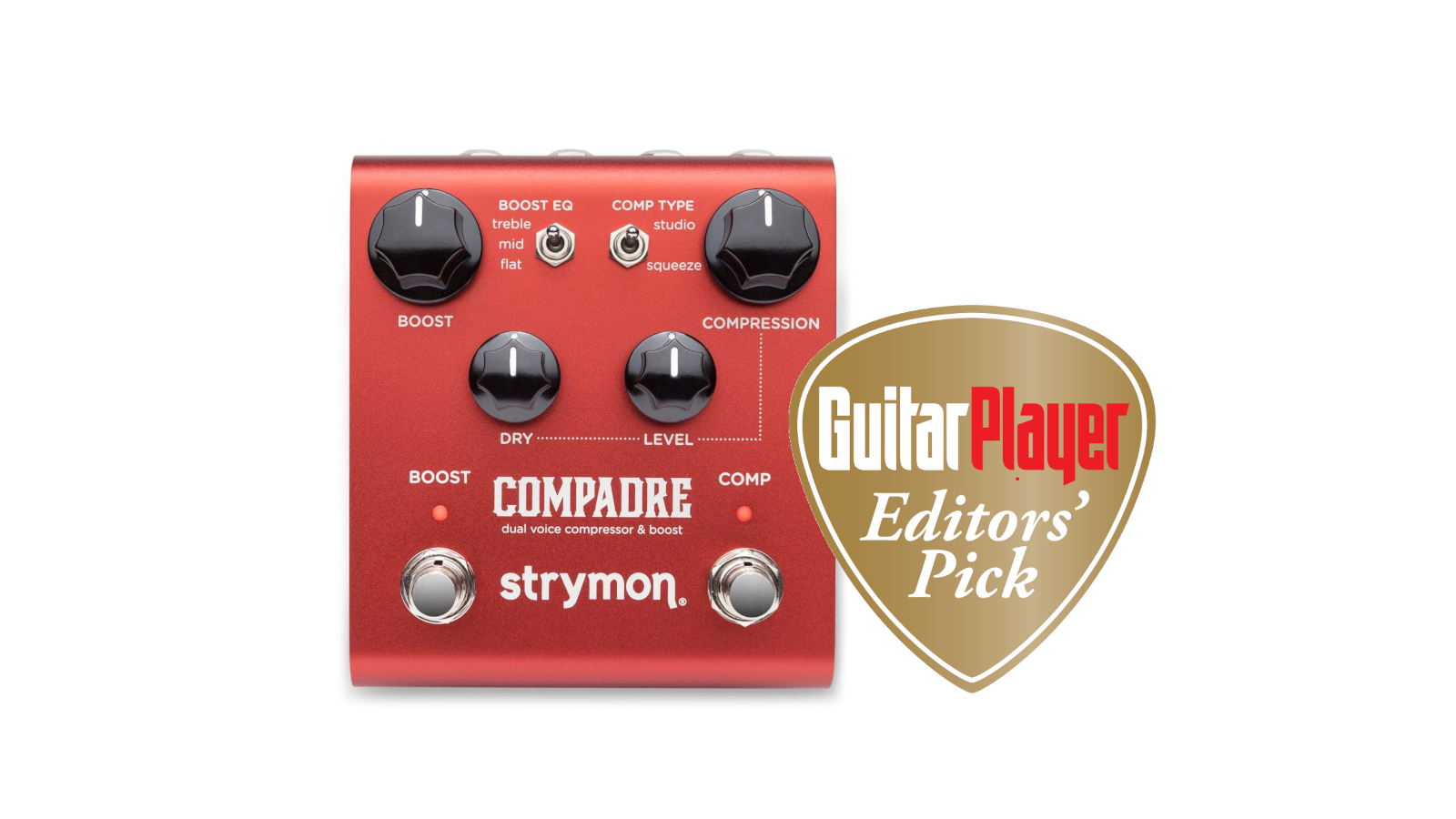GuitarPlayer Verdict
There’s a ton to love about this otherwise unassuming and impressively versatile dual-pedal.
Pros
- +
High-quality and low-noise compression
- +
Two very usable modes
- +
Great-sounding multi-voiced boost
- +
Deceptively versatile
Cons
- -
Some users might enjoy built-in access to multiple presets
You can trust Guitar Player.
Virtually every effects maker with a significant lineup offers a compressor of one flavor or another, but for many players this plethora of squeeze options leads not so much to a love-hate relationship with these pedals but more of a “love-meh.”
If you’ve tried a compressor or three but haven’t found a need to keep one on your pedalboard, chances are this effect's potential benefit to your signal chain, and therefore tone, just hasn’t quite clicked with you yet.
On the other hand, if you have maintained one at the front of your chain, there’s a good chance you’re addicted to the thing and it’s always on.
This preamble comes by way of laying some groundwork both for the strengths and potential underestimation of the Strymon Compadre.
Part of the beauty of the compressor side of this dual compressor-boost pedal is its subtlety and unobtrusiveness, and therefore the way it makes it easy to discount its strengths in the first place.
But we’re getting ahead of ourselves, so let’s dig into the form and function a little more first.
Billed as a dual-voice compressor and boost, the Compadre is a replacement of sorts for Strymon’s discontinued OB.1, an even simpler two-button optical compressor with boost.
All the latest guitar news, interviews, lessons, reviews, deals and more, direct to your inbox!
In the new red box, Strymon has loaded an entirely analog VCA (Voltage-Controlled Amplifier) compressor with what it calls a "studio grade" Class-A JFET input that has settings for Studio and Squeeze, the latter a squishier, more overtly compressed vintage variation on the theme.

Functions such as attack, decay, threshold and gain makeup are preset, so there are knobs for only compression and level, plus a clever dry control for blending your desired amount of un-effected signal into the mix parallel-compression style (which is great when, for example, you want a lot of squish but don’t want to lose your attack and clarity).
The Boost side of the pedal carries a single knob for boost gain, along with a switch to select from three classic modes: Treble, Mid and Flat.
Crucial to this side’s versatility, however, is a boost type switch on the back panel for Clean or Dirty, a simple toggle that takes it from a linear boost to one with more clipping and coloration.

As with most everything Strymon, even the versatile simplicity described thus far isn’t enough.
In addition to input and output jacks, the back panel carries a TRS volume input for connection to an external volume pedal, and a FAV/MIDI jack for use with a Strymon Favorite switch (to instantly call up a favorite preset) or a MIDI controller (to recall up to 300 presets and integrate with full MIDI-switching rigs).
This panel also carries the included center-negative nine-volt DC adaptor input, and the pedal is selectable for true bypass, ultra-low-noise buffered bypass or auto bypass, which forces buffered bypass when a volume pedal is connected to the volume input.
The Comp LED changes color from green to red to amber (respectively) when these modes are selected.

Tested with Les Paul and Stratocaster electric guitars into Friedman Dirty Shirley Mini combo and blackface Bassman (head and 2x12 cab) tube amps, the Compadre quickly provided a plethora of great-sounding tone-shaping options that smoothly segued from subtle to essential.
The compressor side is utterly adept at that “didn’t know I couldn’t live without it until I turned it off” thing, providing a distinct and appealing enlivening of the overall sound that can be easy to underappreciate until you throw the proverbial blanket back over the amp by switching it off.
Studio mode is lush and balanced, adding shimmer and bloom and the perception of extra life in your tone.
It's much like hitting the signal with a good 1176 studio unit or similar, rather than imposing any dramatic squash.
Squeeze mode might not sound quite as thick and juicy as some of the most popular pedal compressors out there – namely the revamped Ross, Dyna Comp and Dan Armstrong clones – but it provides a noticeable sag and swell even while it avoids extremes, which some players might find even more usable.

We found it extremely pleasant and rather addictive. In either mode, this is an admirably quiet compressor circuit, too, which is to say it will of course still “grab” and seemingly amplify any noise ahead of it such as 60-cycle hum, but it induces very little self-noise into the signal in the process.
The Boost side does its thing as efficiently as any simple and well-made solid-state gain stage should, but the voicing and Clean/Dirty switches increase its potential exponentially and really make this another beast entirely.
Treble mode is great for sparkling up dark amps, and Mid helps give single-coils more humbucker-like girth, but we expect players will keep it in Flat more often than not.
As such, the Clean setting ably delivers the relatively uncolored solo lift that many guitarists seek from such pedals.
Switching to Dirty, however, adds a subtle yet tasty degree of clipping that enhances the harmonic depth slightly and aids the impression of pushed tubes, while taking the pedal into the low-gain overdrive zone with the Boost control advanced.
All in all, there’s a ton to love about this otherwise unassuming and impressively versatile dual-pedal, which earns an Editors’ Pick Award.
Specifications:
- CONTROLS: Comp: compression, level, dry, studio/squeeze switch; Boost: boost (gain), treble/mid/flat switch, clean/dirty switch.
- EXTRAS: TRS volume pedal input, FAV/MIDI jack, three bypass modes, center-negative 9V DC adaptor input (adaptor included)
- SIZE: 4" x 4.5" x 1.75" (excluding feet and knobs)
- BUILT: Assembled in USA
Dave Hunter is a writer and consulting editor for Guitar Player magazine. His prolific output as author includes Fender 75 Years, The Guitar Amp Handbook, The British Amp Invasion, Ultimate Star Guitars, Guitar Effects Pedals, The Guitar Pickup Handbook, The Fender Telecaster and several other titles. Hunter is a former editor of The Guitar Magazine (UK), and a contributor to Vintage Guitar, Premier Guitar, The Connoisseur and other publications. A contributing essayist to the United States Library of Congress National Recording Preservation Board’s Permanent Archive, he lives in Kittery, ME, with his wife and their two children and fronts the bands A Different Engine and The Stereo Field.


